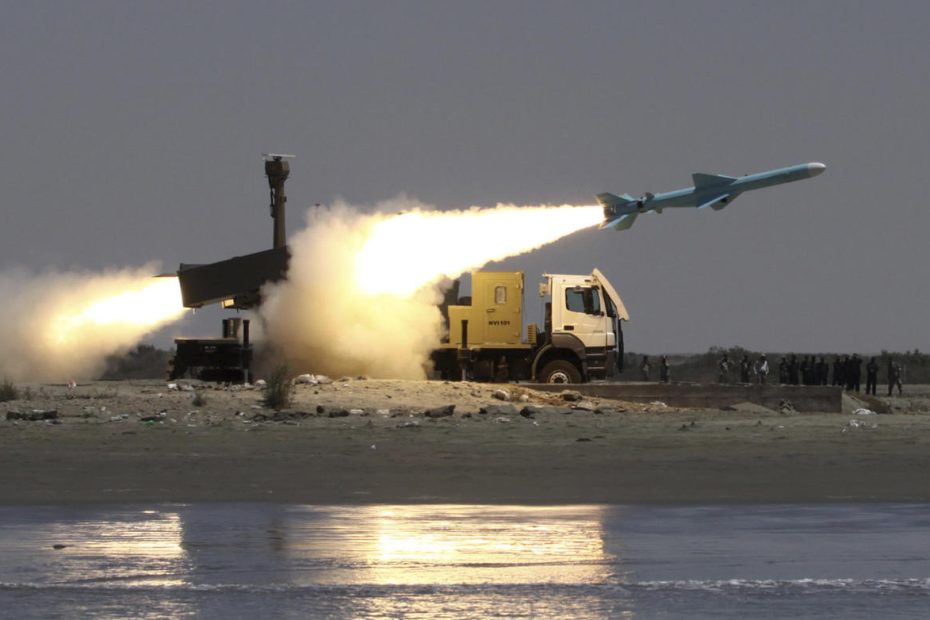DUBAI, United Arab Emirates (AP) — Yemen’s Houthi rebels fired a likely Iranian-made anti-ship missile at a Norwegian tanker in the Red Sea in December, providing a public, evidence-based link between the ongoing rebel campaign against shipping and Tehran, the U.S. military said.
A report released Wednesday by the U.S. Defense Intelligence Agency linked the attack on the Strinda, which set the ship ablaze, to Tehran, the main backer of the Houthis in Yemen's nearly decade-long war. The findings echo those of a Norway-based insurance group that also examined wreckage found on the Strinda.
It comes as the Houthis continue their months-long campaign of attacks over the war between Israel and Hamas, targeting shipping in the Red Sea corridor, disrupting the $1 trillion flow of goods that passes through it each year and in the fiercest fighting the U.S. Navy has seen since World War II.
Iran's mission to the United Nations has not yet responded to a request for comment.
The Strinda, coming from Malaysia and en route to the Suez Canal and then to Italy with a cargo of palm oil, was hit by a missile on December 11. The attack caused a large fire on board, which the crew later extinguished without anyone being injured.
Debris later found on board was analyzed by the U.S. military. The DIA compared the pieces of the missile's engine found on board to the Iranian Noor anti-ship ballistic cruise missile.
“The Iranian Tolu-4 turbojet engine used in the Noor (missile) has unique features — including the compressor stage and stator — that match engine debris recovered from the … Houthi attack on the M/T Strinda,” the DIA report said. A stator is the stationary part of an engine.
Those pieces match images of a Tolu-4 engine that Iran displayed at the 2017 International Air and Space Show in Russia, the DIA said. Visually, the engines were similar in the photos.
The Noor was built by Iran based on the Chinese C-802 anti-ship missile, which Iran bought from Beijing and began testing in 1996 before halting the transfer due to a US pressure campaign. The Iranian version is said to have a range of up to 170 kilometers (105 miles), with an improved version called the Qader having a range of up to 300 kilometers (185 miles). The Houthis have a missile similar to the Qader, the Al-Mandeb 2, with a similar range.
The Norwegian Shipowners' Mutual War Risks Insurance Association, better known by its acronym DNK, also examined the debris after the attack on Strinda. The association determined that it was “highly likely” that the ship had been hit by a C-802 or Norwegian anti-ship cruise missile.
Before the Houthis invaded Yemen’s capital, Sanaa, in 2014, the country had no arsenal of C-802 missiles. When the Saudi-led coalition entered the Yemeni conflict on behalf of the exiled government in 2015, the Houthis’ arsenal came under increasing attack. Soon—and despite Yemen having no indigenous missile production infrastructure—newer missiles fell into the hands of the rebels.
Iran has long denied arming the Houthis, likely because of a years-long United Nations arms embargo on the rebels. However, the U.S. and its allies have seized multiple shipments of weapons destined for the rebels in Middle Eastern waters. Weapons experts have also traced Houthi weapons seized on the battlefield back to Iran.
While the U.S. has previously accused Iran of supplying the missiles the Houthis use in their maritime attacks, Wednesday's report provided the first photographic evidence. The report pointed to a seizure stemming from a Jan. 11 nighttime attack on an Iranian dhow sailing along the coast of Somalia that killed two Navy SEALs. The Navy seized components related to the Noor anti-ship cruise missile, the report said.
The Houthis have carried out sea-based attacks since 2016, when they struck the Emirati ship SWIFT-1 with a missile as it shuttled in the Red Sea between an Emirati base in Eritrea and Yemen. They also attempted to attack the USS Mason, an Arleigh Burke-class guided-missile destroyer, around the same time.
But the Houthis' attacks have escalated rapidly since November amid the war between Israel and Hamas in the Gaza Strip. The rebels have attacked more than 70 ships, firing rockets and drones in their campaign, killing four sailors. They have since seized one ship and sunk two.
The Houthis claim their attacks target ships linked to Israel, the United States or Britain as part of the rebels' support for the militant group Hamas in their war against Israel. However, many of the ships attacked have little or no connection to the war — including some that are bound for Iran, which supports the Houthis.
“The Houthis have likely used Iranian-supplied weapons to carry out more than 100 attacks on land targets in Israel, Saudi Arabia, the United Arab Emirates, and Yemen, and dozens of attacks on ships in the Red Sea and Gulf of Aden,” the DIA report said.
___
Nasser Karimi in Tehran, Iran, contributed to this report.

